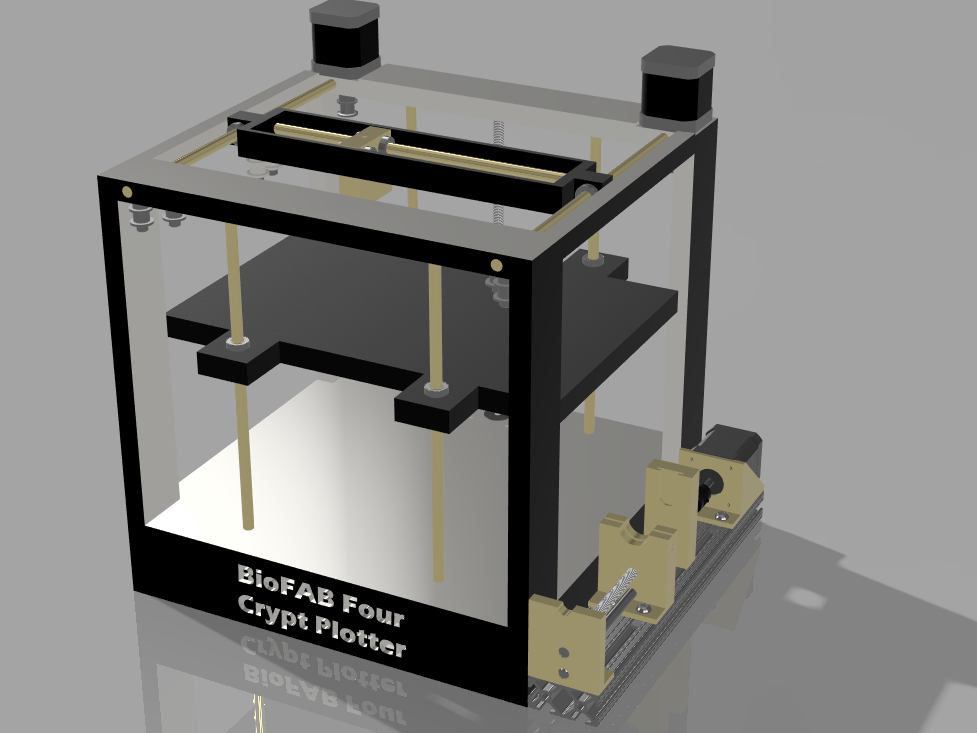Bioplotting-Crypts
Overview and technical details of a 3-dimensional bioplotter for production of intestinal crypt organoid models.
Project maintained by daltonjay Hosted on GitHub Pages — Theme by mattgraham
Bioplotting Intestinal Crypts
To date, there is not a single, in vivo or animal study model that can recapitulate the complexity of the architecture, luminal accessibility, tissue polarity, cell migration, and cellular responses of in vivo intestinal crypts in the normal and diseased gastrointestinal tract.
Here, we present the design of a bioplotter for creation of crypt structures within transwells which, when seeded with intestinal stem cells, should achieve complexity highly representative of the human intestines.

Bioprinting: Addressing Limitations of Organoids
The biggest drawback of gastrointestinal organoids, whether enteroid or colonoid, is isolating and propagating the cells. Since you cannot order them from the internet, you must first acquire human intestine and scrape the crypts from the tissue. Then, through a process of precise medium ratios and cell biologist magic, stem cells are extracted from the crypts and made to propagate, similarly to traditional cell culture lines. However, to differentiate the stem cells, proper luminal micro-architecture is required. While stem cells can self-organize in the upward z-direction to recapitulate the micro-villi structures native to the small intestine, the downward u-shape crypt native to both the small and large intestine is impossible to achieve without microfabricated architecture recapitulating the basement membrane.
Herein lies the beauty of bioprinting. Since bioprinting is an additive digital fabrication technique capable of submicron positioning with optimal control over spatial deposition of cells, it makes it capable of reproducing the architecture, cell diversity, and function of the human intestinal barrier formed through self-organization of stem cells.